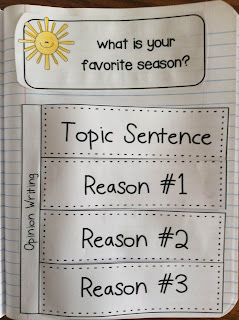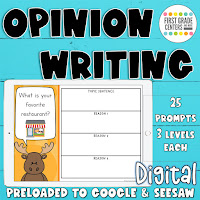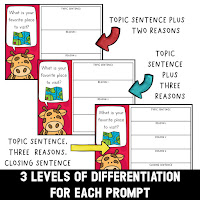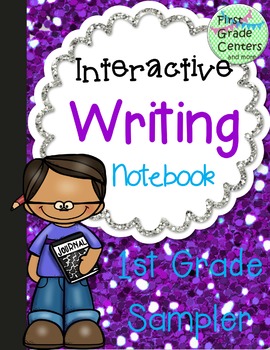Do you struggle with teaching your first graders to revise their writing? It is such a hard skill to teach in first grade. My students always struggled with understanding the difference between editing and revising. As an early elementary teacher, you CAN begin to lay the foundation for teaching children about revising their writing. Today I wanted to share one of my favorite revising strategies for primary aged children- Stretch the Sentence.
View the full resource here:
0
The strategy is just as it sounds. We start with a simple sentence and make it more descriptive and complex one word or phrase at a time. It is a great way for students to begin using adjectives in their writing!
Begin the lesson by modeling a think aloud. You'll want to start with a simple sentence on your projector, chart paper, etc. Let's use the sentence- Mom made cookies- as an example. Underneath the sentence you will rewrite the sentence adding more detail to it.
You could write:
Mom made sugar cookies.
I like to underline the newly added words.
Then you would repeat the process:
Mom made sugar cookies with frosting.
Keep adding even more! It is great to repeat the process 3-4 times.
Mom made sugar cookies with pink frosting.
Mom made sugar cookies with pink frosting and sprinkles.
Repeat this process over several days using a gradual release of responsibility. You'll want to use a new sentence each day.
Day 1- Model the Strategy/Think Aloud
Day 2- Shared Writing- Teacher writes, but students share ideas for words to add
Day 3- Work with a Partner
Day 4- Independent Practice
Remember to build in some time for sharing along the way. Students can share just the final sentence. It is fun for them to see the different sentences that everyone developed!
Once students are familiar with the strategy, it is important for students to continue to practice it, so that the skill becomes more internalized.
You really don't need anything special to teach this strategy. If you want a quick and simple resource to practice this skill, I have created a series of worksheets to simplify your planning. You can click the picture to learn more about this resource.
 |
Ultimately, we want our students to be able to apply this skill to their personal writing. Have students choose a sentence from one of their writing pieces and use the strategy to revise their writing project!
Want to try a free sample? Click the picture!
Need more writing ideas? Check out this post about teaching opinion writing to first graders!

.png)







































